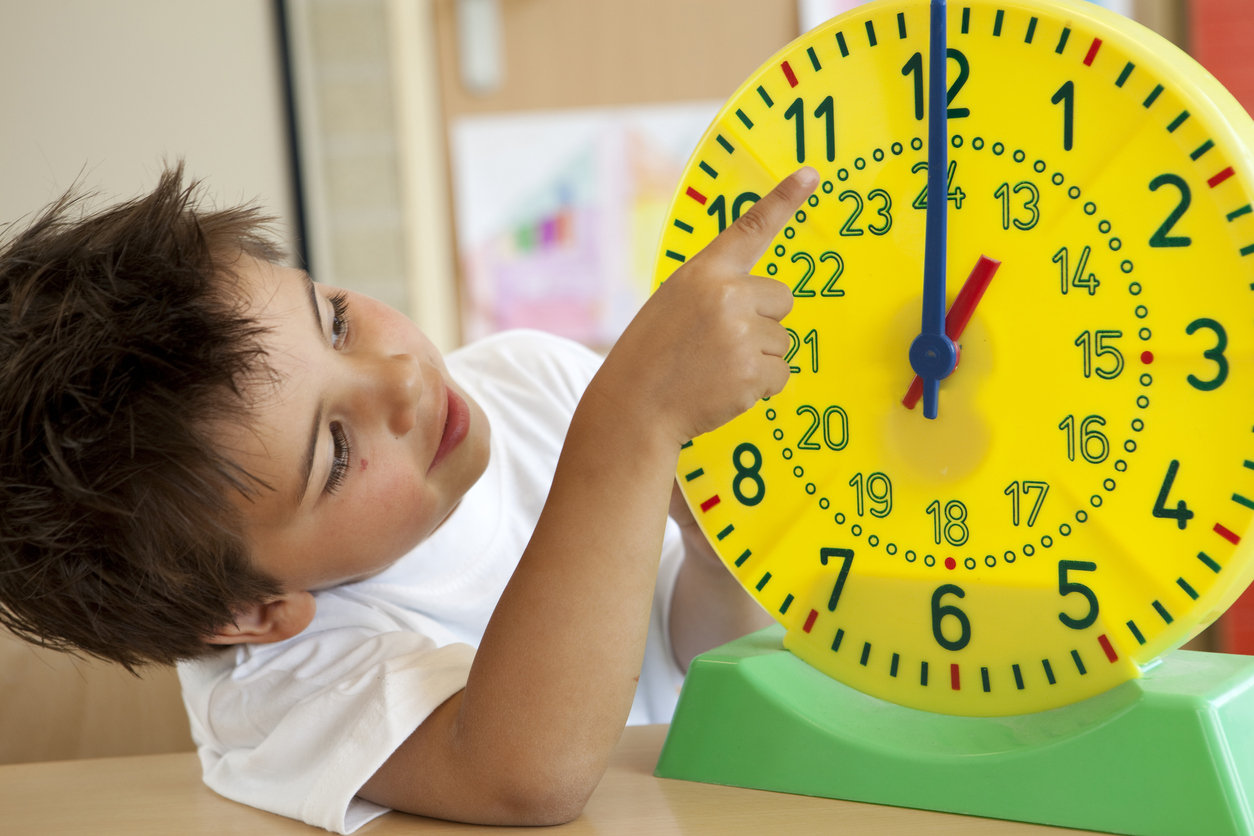
![]()

My daughters would say the cutest things when announcing the “time.” Before they understood how digital clocks worked, that is. I still chuckle at their shouts of: “Mom! It’s noon-o-clock!” and “It’s Four dot dot Oh-Nine!” However, my kids are still learning how to tell time using analog clocks with hands pointing to numbers and moving around the clock face. It’s a work in progress, but there are creative ways to help kids learn to tell time.
Today, while still a fashion accessory, fewer people wear watches, sadly, because you can glance at your cell phone to check the time. That doesn’t mean kids today should only learn to tell time digitally. Because analog clocks are still around, it’s helpful for them also to learn how to read and understand them. Here is some educator advice on fun and creative ways to help kids tell time.
Quick Contents
When to Teach Kids How to Tell Time
“In my experience, children are ready to learn about clocks and telling time when they understand that their days are structured by events that center around time, such as meal times, bedtimes, and birthday parties,” says Rachel Guritz, an Outschool educator who teaches a “Time Telling” virtual camp for kids ages five to eight. “A general understanding of number sense is needed, including counting to 12, naming the numerals to 59, and comparing numbers.”
Guritz says in the online clock camp class, “the learners learn that telling time is not as tricky as they might believe.”
Telling Time is Like Other Activities
It can seem overwhelming for young children, but Guritz says, “Telling time is like any other activity that children learn to do, such as riding a bike or writing their full name.”
She advises parents and educators to practice with an enthusiastic and encouraging grownup who can help them review mastered skills before moving on to more advanced skills. This allows students to build on what they already know.
Creative Ways to Help Kids Tell Time
Here are some creative ways educators suggest using to help kids tell time.
Social media personality and educator Spencer Russell, founder of Toddlers CAN Read, says if kids struggle to learn analog clocks, teach the hour first, then to the five, and then to the middle. … “Loads of counting by five games and loads of adding up. So, being able to count to 5, 10, 15,” he says.
Russell says making time telling an interactive game is key. “If you’re enthusiastic, spin that big yellow clock to a specific time and have kids call it out. There are also ways to do it with a whiteboard and marker.”
For example, using toy hands, you can show on a toy clock that it’s 10:30 a.m. Have your child write down 10:30 a.m. (numerically) on the whiteboard. Or, Russell suggests, shout out a time, like 11:15, and draw a large circle on the whiteboard. Then have them draw the hands pointing to the numbers depicting 11:15.
6 Clock Toys and Games
Here are six toys and games you can play to help teach your little one how to tell time.
1. Judy Clocks
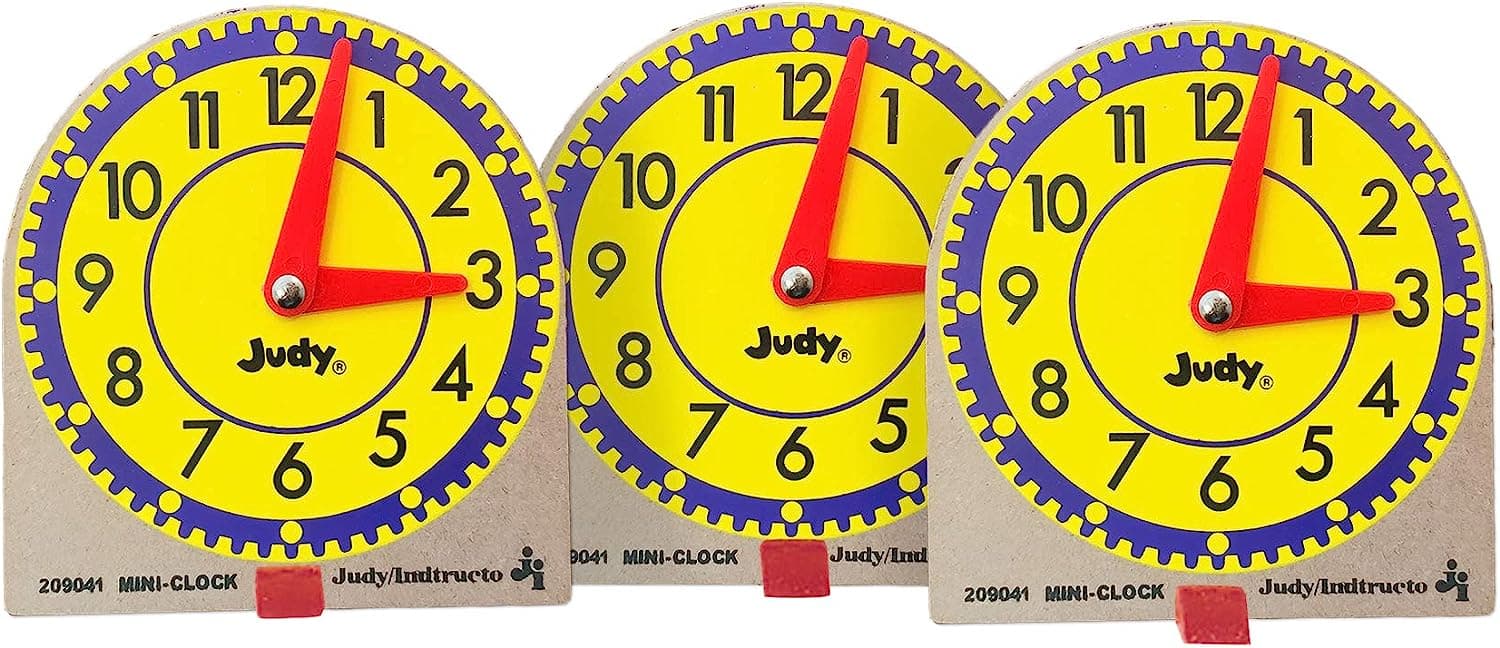
Buy Here
Manufactured by Carson Dellosa, Judy Clocks are bright yellow wooden clocks with big numbers that have been around for over 40 years. This set comes in a collection and is perfect for little hands to manipulate. On Amazon, you can find Judy clocks of all sizes, with large, printed numbers and sturdy hands that move easily to show various times.
2. Time Activity Set
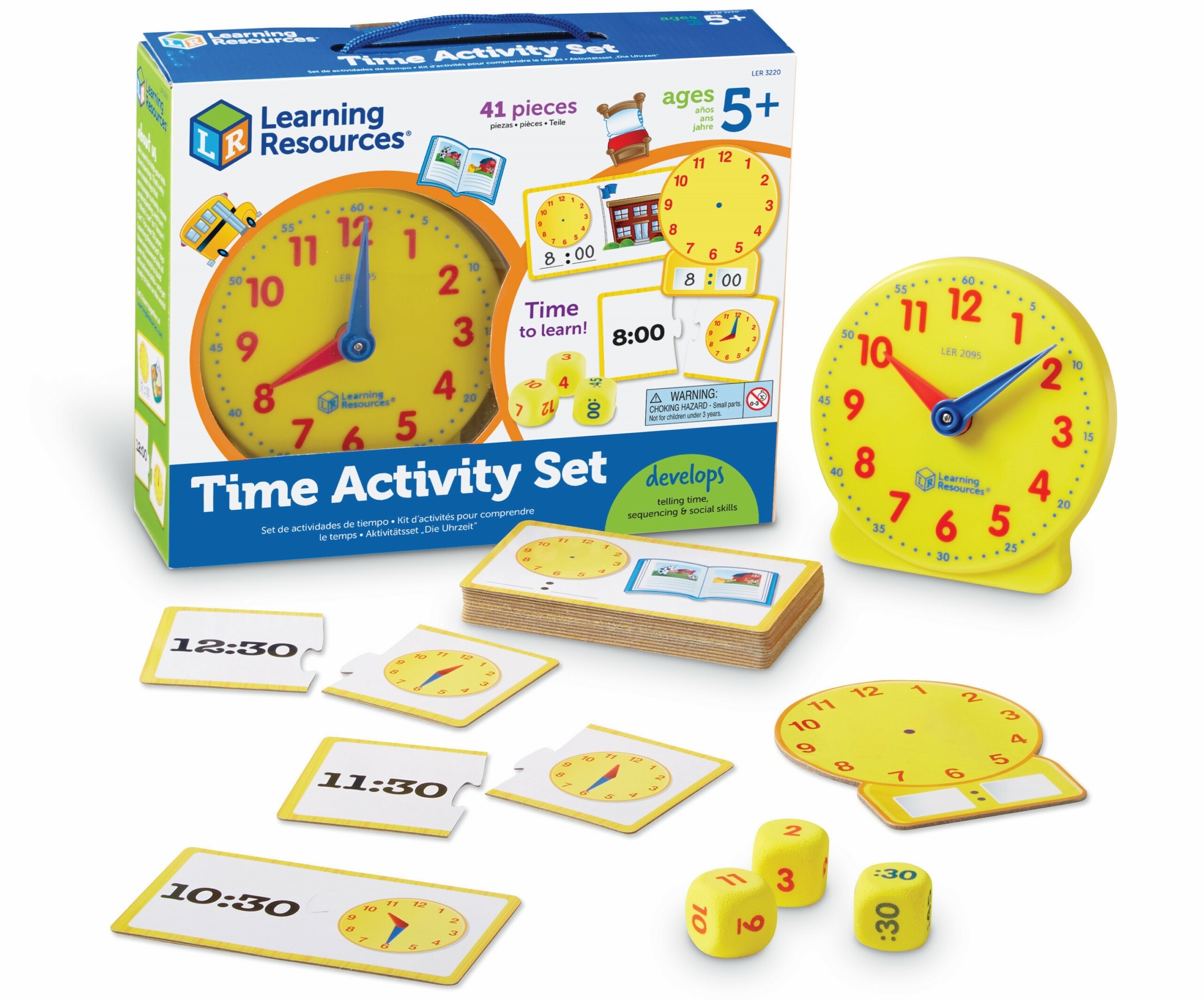
Buy Here
The Learning Resources Time Activity Set includes a Judy clock. This engaging set helps kids learn the difference between analog and digital time and identify time to the hour, half-hour, and minute. Additionally, illustrated cards teach youngsters how to write down time and problem-solve. This activity set includes a plastic clock with movable hands, 24 double-sided analog and digital puzzle cards, 12 double-sided write-and-wipe daily activity cards, and an activity guide—all great ways to help kids understand clocks.
3. Telling Time Play-Doh Mats
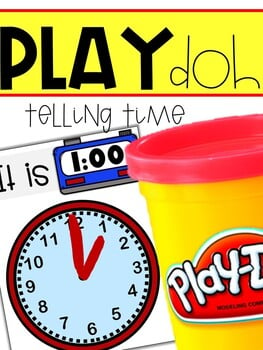
Buy Here
These Play-Doh mats help your child “roll out” the long hand for minutes and the shorter hand for hours. You can add number cookie cutters to create the corresponding time to match the hands on each clock. An illustration in the upper right corner of each clock page lets you write out the corresponding digital time.
4. The Baby Penguin My Activity Clock

Buy Here
If you want something cutesy and niche for your child, you’ll love this charming wooden toy that promotes fine motor skills and introduces children to sequential thinking. It’s handmade from hardwood plywood in Vermont and teaches educational concepts, including numbers, time, weather, and the days of the week.
5. Janod Learn to Tell Time Magnet Book
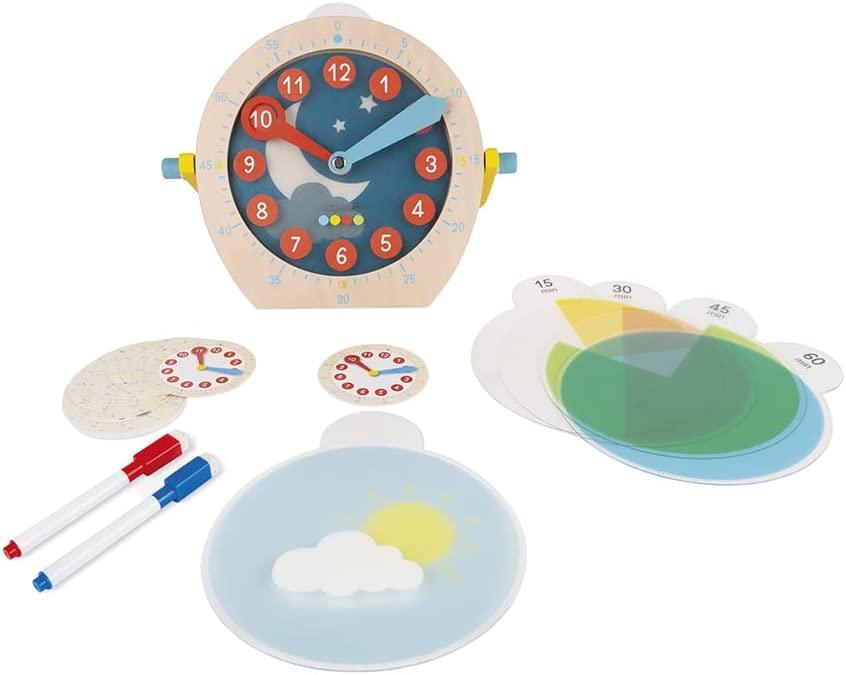
Buy Here
The epitome of clocks, this one is amazing and honestly one of the prettiest toys you’ll ever encounter. This unique Janod clock is a game in disguise and comes with a yellow carrying handle that can also be used as the clock stand. It’s a great visual explanation of both analog and digital clocks. It also contains 13 cards your child can duplicate, with one side numerical and the other analog. Red and blue markers to use on the included erasable cards help enhance time-telling skills.
6. Eeboo Time Telling Game
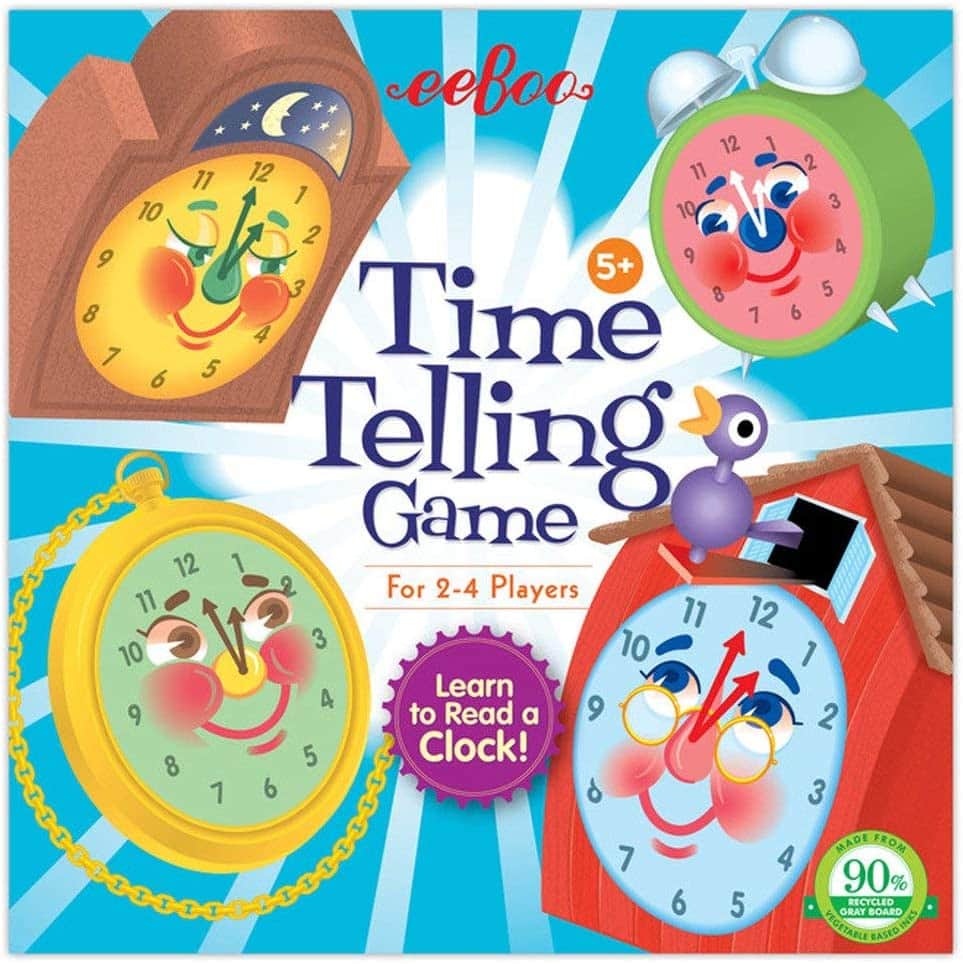
Buy Here
This time-telling game connects digital and analog clocks to teach children how to tell time both ways. Cards can be varied by difficulty level, and random cards help teach kids odd times, like 1:17. It includes wording like “half past” and “quarter to.” Recommended for two to four players, the game is manufactured by a woman-owned business and consists of a scorepad, four clocks with movable hands, and 50 game cards.
Telling time doesn’t come easy to all kids, and that’s okay! That’s why there are many toy clocks and games to make all these numbers and the concept of time easier for developing minds to grasp. And remember: Even though there are plenty of educational games and apps out there, engaging in non-screen clock activities can help cut down on iPad or tablet time and help kids have an “a-ha!” moment when they realize they’ve mastered the art of time-telling. Good luck!
This article contains affiliate links. These opinions are our own. However, if you buy something, we may earn a small commission, which helps us keep our content free to our readers. Check out our Chick Picks Shop to see more of our recommended products. It’s our carefully curated shop of products we love and recommend! ❤️
